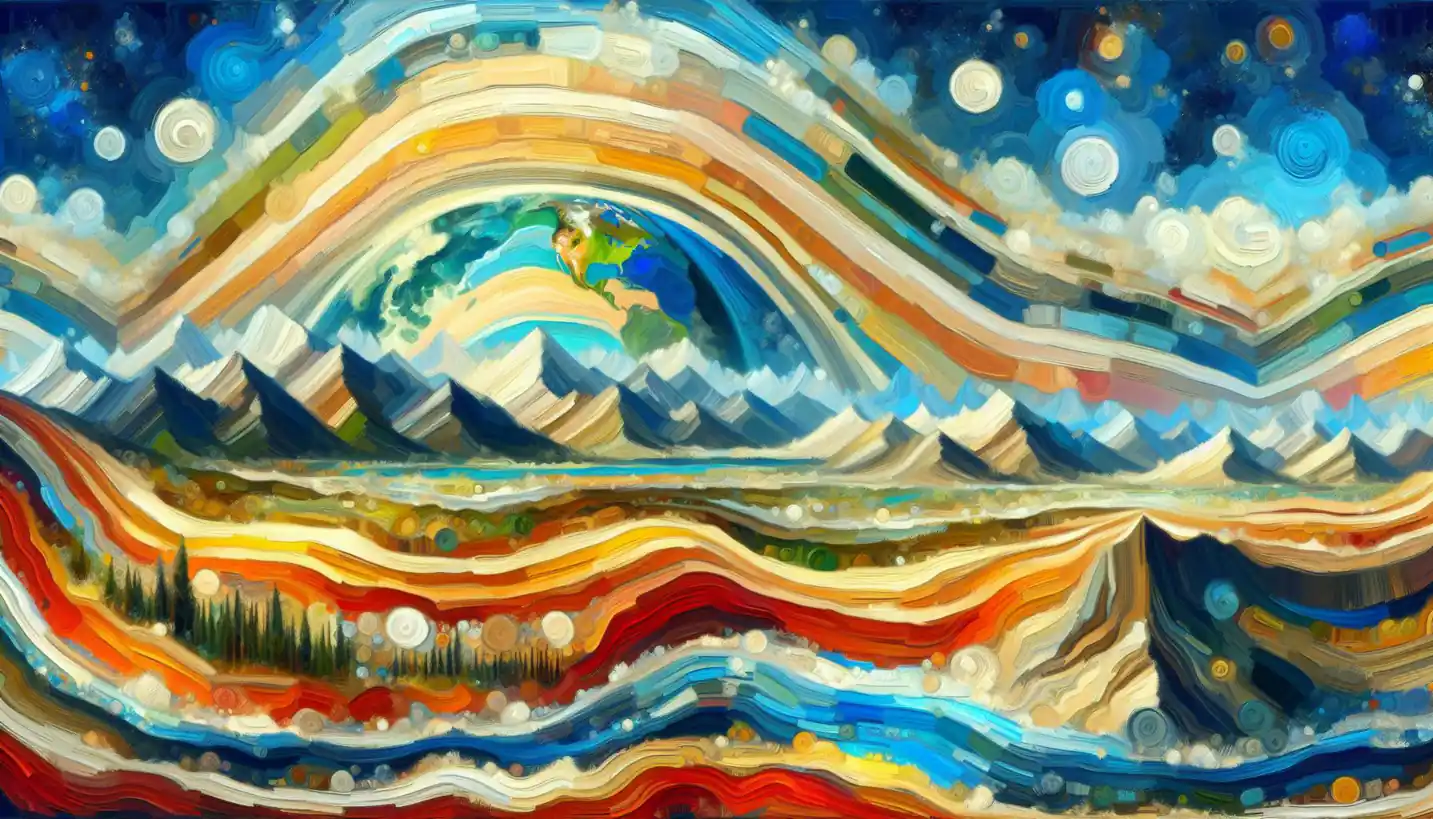· Earth Science · 5 min read
Asthenosphere: The Hidden Force Shaping Our Planet
The asthenosphere, a less rigid layer below the lithosphere, influences our planet's dynamics. Discover how this hidden force contributes to plate tectonics and volcanic eruptions.

Beneath our feet lies a world of wonders we seldom consider. One of these hidden marvels is the asthenosphere, a mysterious yet vital part of Earth’s structure. Imagine a realm beneath the Earth’s crust, where rocks flow like thick honey. This area is not entirely liquid, nor is it solid; it occupies a curious middle ground that allows our planet’s tectonic plates to move. But what exactly is the asthenosphere, and why should we care about it?
The term “asthenosphere” might sound a bit intimidating, but break it down and it becomes friendlier. “Asthenos” comes from the Greek word for “weak,” and “sphere” refers to its presence as a layer. So essentially, it’s a “weak layer,” located about 100 to 200 kilometers beneath the Earth’s surface. It plays a crucial role in plate tectonics, allowing the more rigid lithosphere above to move.
The Geology of the Asthenosphere
To understand the significance of the asthenosphere, it’s helpful to imagine Earth like a giant peach. The skin represents the crust, the juicy flesh symbolizes the mantle, and the pit is akin to the core. The asthenosphere is a part of the upper mantle, just beneath the crust, where temperatures and pressures are high enough to partially melt rocks.
This partially molten state gives the asthenosphere its unique ability to flow. The heat within this layer comes from two primary sources: leftover heat from the planet’s formation and the decay of radioactive elements. This heat makes the rocks in the asthenosphere behave plastically, allowing them to move slowly over geological time scales.
The Dance of Tectonic Plates
Why is the asthenosphere important? For starters, it’s essential for the movement of Earth’s tectonic plates. Think of these plates like giant rafts floating on the thick, syrupy asthenosphere. This movement is responsible for some of Earth’s most dramatic events, like earthquakes, volcanic eruptions, and the creation of mountains.
When you see a mountain range or feel the tremor of an earthquake, you’re witnessing the power of the asthenosphere in action. It acts as a lubricant that allows plates to slide, collide, and scrape past each other. Without it, our planet’s surface would be very different, possibly lacking the dynamic features that make Earth so interesting and habitable.
The Science of Measuring the Asthenosphere
Unlocking the secrets of the asthenosphere isn’t easy because we can’t observe it directly. Instead, scientists rely on seismic waves to study this hidden layer. When an earthquake occurs, vibrations travel through the Earth, and how they speed up or slow down provides clues about what’s beneath the surface.
Seismic waves move differently through solid rock compared to this more ductile layer. By analyzing these waves, scientists can map the boundaries and behavior of the asthenosphere. This information helps them understand not only the composition of this layer but also its temperature and mechanical properties.
The Connection to Earth’s Surface
Interestingly, the asthenosphere doesn’t just lie passively beneath us; it interacts with the surface in fascinating ways. One such interaction is isostasy, the gravitational balance of Earth’s crust “floating” on the denser, more malleable asthenosphere below. This is why regions with thicker continental crust, like mountain ranges, have deeper “roots” that extend into the asthenosphere.
Volcanism, too, owes much to this layer. Hotspots, like those forming the Hawaiian Islands, are thought to originate from plumes of hot material rising from deep within the mantle through the asthenosphere. As these plumes reach the surface, they generate volcanic eruptions that build islands.
Future Explorations and Discoveries
Our understanding of the asthenosphere is still evolving. As technology advances, new methods of studying this hidden layer are being developed. Geophysicists are constantly refining their models and techniques.
Moreover, climate change might influence the asthenosphere’s behavior by altering sea levels. For instance, as glaciers melt and sea levels rise, the stress on the underlying plates changes, potentially affecting plate movements and volcanic activity. This intricate connection underscores the importance of studying Earth’s interior as a dynamic system.
Why the Asthenosphere Matters
So, why does the asthenosphere hold such importance? It’s simple: this hidden layer is a critical component of Earth’s geological machinery. It helps recycle carbon through subduction and volcanic activity, playing a role in climate regulation over long timescales. Understanding it can provide insights into natural resources like minerals and geothermal energy.
Furthermore, by studying the asthenosphere, we can better predict natural disasters such as earthquakes and volcanic eruptions, potentially saving lives and mitigating damage.
Conclusion
The asthenosphere, with its flowing rocks and vital role in plate tectonics, may be hidden from view, but its influence is profound. It’s a reminder of the layered complexity and intricacy of our planet. As we continue to explore and understand more about this enigmatic layer, we gain not only knowledge but also an appreciation for the forces that have shaped our world over millions of years.
In a world constantly in motion beneath our feet, the asthenosphere is one of Earth’s unsung heroes, tirelessly working to ensure that the surface above remains a dynamic and vibrant place. Through continued research, we may uncover even more surprises hidden in the depths, further enriching our understanding of the planet we call home.



